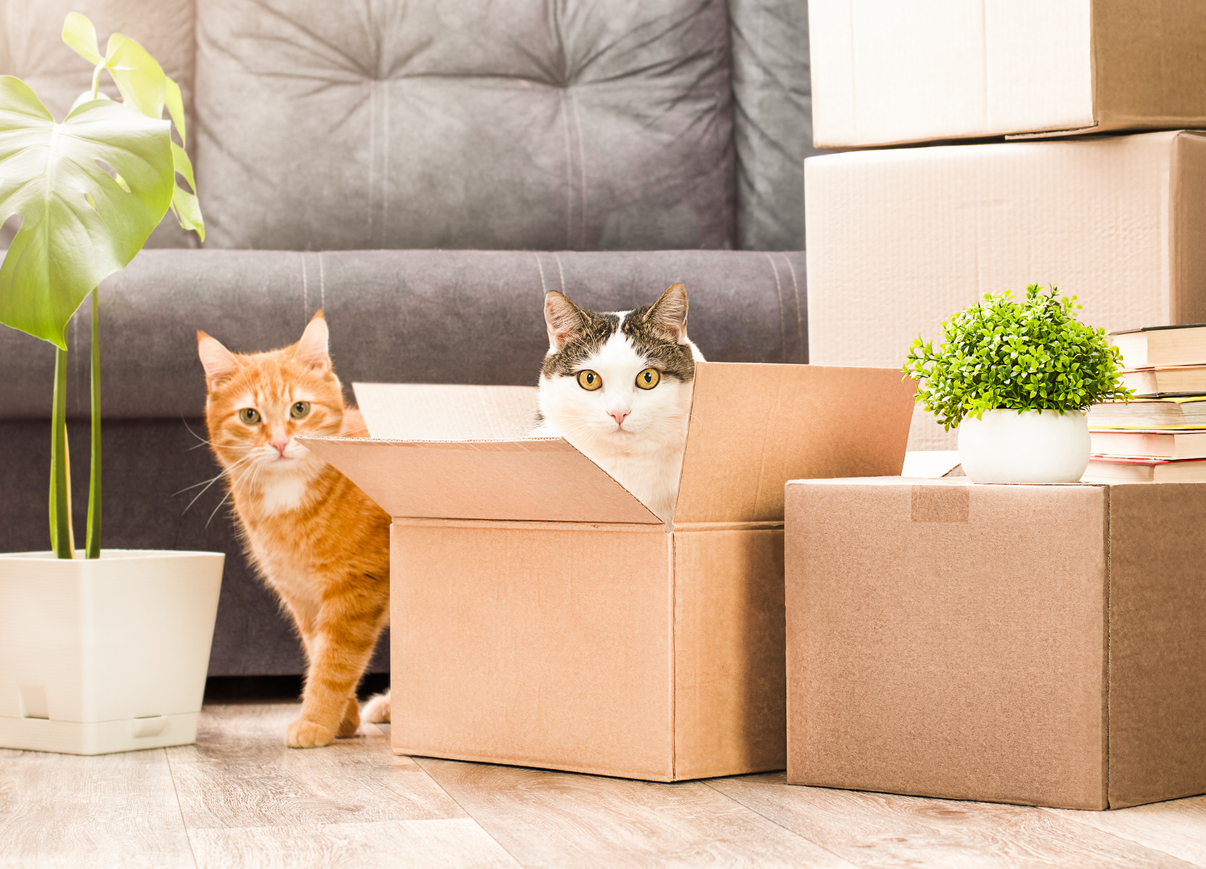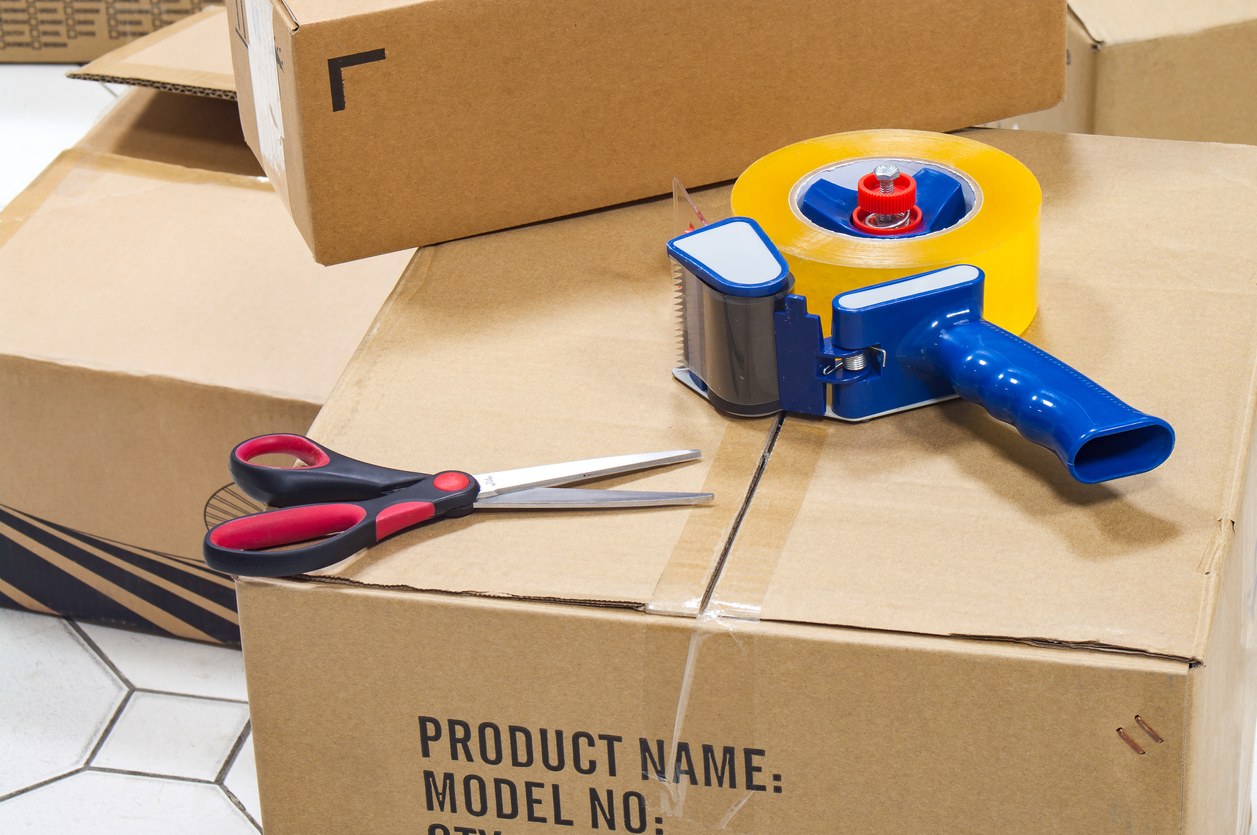Ultimate List Of Moving House Tips
Posted on 05/07/2022
Putting together a definitive list on any topic is no easy task, but armed with years of expertise, we decided to take on the challenge! Our array of moving tips encompasses everything from efficiently managing logistics on moving day and expert packing techniques to initiating the conveyancing process and presenting your property to prospective buyers. Read on for our ultimate list of moving house tips…

Prior To Moving Home Tips
1. Declutter (and then declutter again)
Before you start packing make sure you lighten the load by decluttering first. That doesn’t mean you have to throw half of your belongings out, but it does mean you have a chance to be brutal. Anything that you don’t regularly use, haven’t needed in the past year, clothes that no longer fit or are out of style, equipment for hobbies you no longer participate in and so on. Now’s your chance to start with a clean slate, so make sure you’re brutal and don’t take things you don’t need or use with you to your new home.
2. Donate things you no longer need
Instead of sending things you no longer want to landfill, make sure you donate items to charity to give them a second life.
3. Order boxes and packaging materials early
Think about the boxes or crates and packaging materials you might need. This might involve asking friends and family to donate boxes to you or it could involve ordering rental crates and moving equipment.
4. Research moving services
Decide on whether you want to move yourself or hire a professional moving company. We’d recommend going on customer reviews (check out places like Trustpilot and Feefo), and personal recommendations, or you can ask on your local Facebook group whether people can recommend local removal companies.
5. Book your removals service
Once you’ve made a decision make sure you go ahead and get it booked as soon as you have an idea of your completion date. In the popular summer months, you might find that the best removal companies get booked up fast.
6. Plan childcare
Older children can be an asset, helping you when moving day comes along, but younger children can add a layer of stress to an already busy day. Now is the time to arrange childcare, especially if your children are very young.
7. Plan pet care
As above, you’ll want to make sure that you have pet care in place for moving day. That might mean doggy daycare, a friend taking care of the cats or you might even need to book a pet hotel, kennel or cattery for a day or two.
Having your four-legged friends taken care of means less stress for you on moving day and it also means that in turn they may well be less stressed out.

8. Book time off work
Check what annual leave you have left and book some time off work to help facilitate your move. We’d recommend some time off prior to the move to give you time to declutter, pack and deal with the admin. You’ll also want to make sure you book some time off in the run-up and immediately after the move to give you time to unpack and get settled in.
9. Plan what you’ll eat and drink
As well as planning on what you’ll eat and drink on moving day, once you’re in your new home, you’ll also need to plan what you’ll eat on your first evening in your new home. If you’re opting for a takeaway, using a service like Just Eat or Deliveroo will make life easy, just don’t forget to update your address if you do!
If you’re looking forward to cooking your first meal in your new kitchen, you might want to arrange an online grocery delivery to arrive on the evening you move in to ensure you’ve got all the ingredients you’ll need, again, just make sure you’ve updated your address before ordering.
10. Pack overnight bags
Instead of searching through boxes before you’ve had time to fully unpack, pack overnight or weekend bags just before your move containing all your essentials like nightwear, a change of clothes and toiletries.
Also don’t forget to include warm and cosy comforts like slippers and dressing gowns, as well as crucial electrical devices, phone chargers, and any important documents you might need.
11. Change of address admin
Dealing with the necessary change of address admin can be time-consuming, but new services like sloth move and similar, allow you to update your address across multiple providers all in one go, and what’s more, some of these services are free to use.
12. Set up mail redirection
Use the Royal Mail to forward your post to your new address. Doing this means you won’t miss any vital post with any services you failed to remember to set up prior to your move.
13. Order new appliances & furniture
Referring to the floorplan for the property you’re buying will help you work out whether your existing furniture will fit, whether you’ll need any new pieces of furniture when you more. Perhaps more important though is ensuring you have all of the appliances you’ll need so make sure you know what the current owners might be leaving (the cooker for example) and which they’ll be taking with them (fridge freezer, dishwasher, washing machine etc.) Plan what you’re going to need now, and either get them ordered ahead of time and delivery date confirmed, or make a note of what you decide on so you can quickly purchase once your moving date is firm.
14. Order new appliances & furniture
Referring to the floorplan for the property you’re buying will help you work out whether your existing furniture will fit, whether you’ll
15. Start running down your freezer contents
In the days running up to your move, make sure you start running the contents down so you won’t end up wasting any food when you move as you’ll want to ensure your freezer is switched off and fully defrosted ahead of time.
16. Check your home insurance
You’ll want to make sure that your home insurance will cover you on moving day and at your new home, so it’s worth checking your policy or giving them a call to put your mind at ease. Make sure too that you take an inventory of any expensive items, especially those that could get easily damaged in transit.
17. Create a moving day playlist
Create a playlist of your favorite upbeat tunes to keep you motivated and energised on moving day. Music can make the process more enjoyable and help maintain a positive atmosphere and it could help give you that extra boost of energy when you feel yourself flagging!
Moving Home Packing Tips
18. Pack away seasonal items first
Packing is a mammoth task, and once you’ve decluttered, we’d strongly recommend starting the job of packing by focusing on seasonal items. For example, if you’re moving in summer, you’re safe to start packing away Christmas decorations, winter coats, clothing and winter sports gear.
Once you’ve packed seasonal things, you can move on to packing books and collectibles, the contents of your spare room, attic, sheds and garage as well as things like shoes, bags and jewellery. You can also start dismantling furniture in rooms you don’t use as often.
19. Keeping furniture together
When dismantling flat-pack furniture, use a plastic ziplock food back to store screws and bolts. Use a marker pen to label the bag so you know what item of furniture the screws and bolts are used for, then tape the bag to one of the furniture pieces.
20. Protect dismantled furniture
Once you’ve dismantled furniture and have stored the screws and bolts (as above), you can keep all the parts together by wrapping them with a bath towel or a blanket. Not only will this keep the parts of the furniture together, but it will also help protect the dismantled parts during the move.
21. Pack an essentials box for moving day
The day that you move is likely to be a frantic day with a lot going on, the last thing you want is not to be able to lay your hand on something crucial that you need. From keys to important documents, snacks to bottled water, your moving day essential boxes should include everything for your big day.
22. Don’t overpack boxes
Although cardboard boxes are typically used for moving house, the bigger the box the more tempting it can be to overpack it. Cardboard boxes, even triple-walled ones can’t carry much weight and the last thing you want is to overpack and risk being unable to lift the filled box or worse, the bottom falling out, spilling the contents all over the place.
Don’t then be tempted to choose huge boxes, as it can be more tempting to overpack them, so use medium-sized boxes where possible, and test the weight of the box periodically to ensure it doesn’t become too heavy.
23. Label everything
Once packed, label up your boxes so you know roughly what’s inside. It doesn’t need to be an item-by-item full itinerary, but make sure you add some information about the contents and not just the room it’s for.
For example, a box for the kitchen might be roughly itemised so you know that your pans, cutlery and crockery is inside, whilst another box for the kitchen might include store cupboard tinned and dry goods as well as herbs, spices and condiments. Should you need anything, you’ll find it much easier to locate any item you might want to find.

24. Pack things inside other things
To save space, utilise the space inside things that can’t pack flat. For example, if you have a slow cooker, you might want to utilise the space inside to store your herbs and spices inside. Doing this also provides a bit more protection for the things packed inside.
25. Use a tape dispenser
When assembling cardboard boxes, using a tape dispenser will help you get the job much more quickly. These can easily be hired or bought online, and really will make assembling your moving boxes much faster.
26. Don’t scrimp on packaging
Using ample packaging is extremely important for anything that’s remotely breakable or delicate. From electrical items to glassware and ornaments, you’ll want to make sure you’ve got ample bubble wrap and newspaper. For a more eco-friendly option, use items of clothes, balled-up socks, towels and bedding to wrap and protect your valuables. Remember that the less space left inside a box the better, as this will mean the contents are less likely to move around in transit.
27. Avoid masses of tangled wires
Most homes are full of electrical items with power cords and USB cables. Tossing them all into a box might well keep them together, but they can become easily tangled. Knowing which cables are for what appliance can also become an issue. You can use velcro cable tidies or even just an elastic band to allow you to store cables tidily and ensure they won’t become tangled.
To help you identify the right cable to go with the right device, you could use a simple cardboard tag with the device name on, tied to the corresponding cable.
28. Consider using crates instead of boxes
Cardboard boxes are cheap and readily available, but plastic crates are sturdier, more resilient to bad weather and if your crates have lids, they can easily be stacked one on top of the other, ideal if you’re short on space.
29. Vacuum pack soft items
From clothes to bedding, vacuum packing can cut down on bulk considerably and are easy to use with the aid of a vacuum cleaner.
30. Use suitcases to pack
You’re likely to have an attic full of suitcases, so make use of them and use them to pack clothes in ahead of your move. You’ll find a 20kg fully packed case is far easier to move around in a wheeled suitcase than it would be to pack the same weight in a box!
31. Pack heavy items carefully
If you have heavy items, pack them across the bottom of boxes. It might seem logical to pack all of your books in the same box, but, a cardboard box full of books will be exceptionally heavy. Instead, spread things like books across multiple boxes and make sure you line the bottom of the boxes to not risk damaging anything.
32. Map out the new area for your kids
Before moving day, create a personalised map of your new neighborhood with fun places to explore for the whole family, like quirky coffee shops, hidden parks, playgrounds and even Pokemon stop locations. It’s a great way of helping you and your family to get excited about your new surroundings.
33. Unpack your ‘unpack me first’ box
Pack a box in advance full of lovely little things that will help you and your family settle into the new home. From brand new duvet covers to snuggle under, to your favourite snacks and family photos and even scented candles and the kids’ favourite frozen pizza.
34. Pack essentials last
Make sure you keep out things you’re likely to need in the run-up and on your moving day itself. Although this might sound obvious, there are likely to be some less obvious, mundane things you might need. Everything from pots and pans to clean bath towels are going to be needed in the days running up to the move, so try to pre-empt all of things you’ll need.
Wondering how much your property is worth? You can get a fast free online home valuation here or find our moving home checklist here.